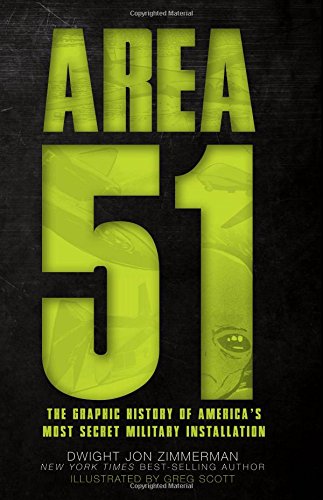If you like XCOM: Enemy Unknown, you’ll also like…
Less about the little green men, more about the squads and scientists.

This article was originally published on October 23, 2015.
The best moments in XCOM: Enemy Unknown happen on the ground, at the squad level. It’s where you hope all your base building, troop training, and bizarre government research will pay off. With soldiers hunkered down behind a broken piece of debris or scanning for alien activity from a rooftop, you have to hope the team you’ve assembled is made of the right stuff.
Or soon they’ll be the dead stuff.
But being prepared in XCOM will only get you halfway. As Evan noted in his 2012 review, the turn-based strategy game has a way of vaporizing your best-laid plans and best-trained soldiers. And this core appeal—the constantly evolving tension between planning and execution—is what has always drawn me back.
I’m focusing this edition of ‘If you like…’ on the serious and satirical side of close-quarter, squad-based combat, and the government agencies that try to help win the war from a different kind of battlefield. You’ll find there’s a lot of XCOM’s underdog spirit to go around.
Three Kings, directed by David O. Russell
A rare movie that deals with the first Gulf War, Three Kings is memorable for its gritty, in-the-sand depiction of a relatively short conflict that most people remember from cable television. While the film deals with the very last days of the 1991 war, it weaves its strange story through the lives of multiple stakeholders—ordinary soldiers, Iraqi civilians, and ambitious news media personalities.
Three Kings is on one level a humorous heist movie about a group of American military men who want to take a little something back for themselves. But it also makes an argument for the way the unpredictable nature of war can change those who see it up close. As well-trained (or not so well-trained) as the movie’s soldiers are, the randomness of the conflict they’re caught in can’t help but change them. It’s up to them to decide who’ll they will be if they make it home.
The biggest gaming news, reviews and hardware deals
Keep up to date with the most important stories and the best deals, as picked by the PC Gamer team.
Area 51: The Graphic History of America's Most Secret Military Installation, written by Dwight Zimmerman, illustrated by Greg Scott

From the development of the SR-71 Blackbird to killer satellites shooting tungsten bolts from outer space, this story of the notorious Area 51 research base is filled with fascinating insights. While it’s long, Cold War narrative saw it often associated with alien visitors and conspiracy theorists, Zimmerman and Scott’s presentation makes a strong case for Area 51 as the unsung hero of late 20th-century defense research. Just because no one wanted to acknowledge its existence doesn’t mean its labs weren’t turning out some brilliant, game-changing designs.
The spectre at play in this graphic-novel treatment of Cold War history is, of course, the Soviet Union and the USA’s post-Cold War enemies. The book doesn’t attempt to take an authentic political stance on these events, which is refreshing. Instead it offers a clear look into the development of the technologies that scientists, and the politicians who funded them, felt might turn the tide of war in favor of the United States. It’s a history told from a particular point of view, but one that’s both informative and entertaining in its style and attitude. In its own way Area 51 tells the story of an XCOM many of us lived through but didn’t even know it.
Manhattan
Manhattan's take on the development of the world’s first atomic weapons at Los Alamos is a compelling watch. Although it’s clear throughout that we’re not watching a purely historical look at the top-secret Manhattan Project, the show’s commitment to recreating the claustrophobic atmosphere of the period is well-executed and thrilling. Like the bases you dig into the ground in XCOM, we see how scientists, soldiers, and bureaucrats converge to try and win a war using untested technology against a seemingly unbeatable enemy.
The show’s first season deals mostly with the struggles of physicist Frank Winter as he tries to perfect his bomb design with an understaffed and undervalued team considered second-rate on the classified Los Alamos base. A rival scientist leads the much larger and better-funded team developing what the US military hopes will be an atomic bomb it can drop on Germany to end the war. The tension between these scientists, and the way politics often interferes with scientific reality, creates a fascinating story arc demonstrating the effect of total war on the homefront.
Restrepo, directed by Tim Hetherington and Sebastian Junger
Directed by the late, great photojournalist Tim Hetherington and Perfect Storm author Sebastian Junger, Restrepo documents a year in the life of 2nd Platoon, Battle Company during its deployment in the Korengal Valley of northeast Afghanistan. While there are moments of levity and humor to be found in the soldiers’ daily lives, the documentary film’s release in 2010 was notable for its transparent look at the successes and failure of the American mission in Afghanistan.
Hetherington and Junger embedded themselves in the military unit for 15 months as they filmed and gathered footage that is often breathtaking and sometimes disturbing in its honesty. If war is hell, then we also have to say it’s also a place where ordinary people—civilian and military grunt alike—still find ways to live and survive. This film is worthy testament to that reality.
Patrick currently works as web editor for Hinterland Studios, which is making The Long Dark. For more installments of ‘If you like...’, check out the other games he's covered in this series below:

